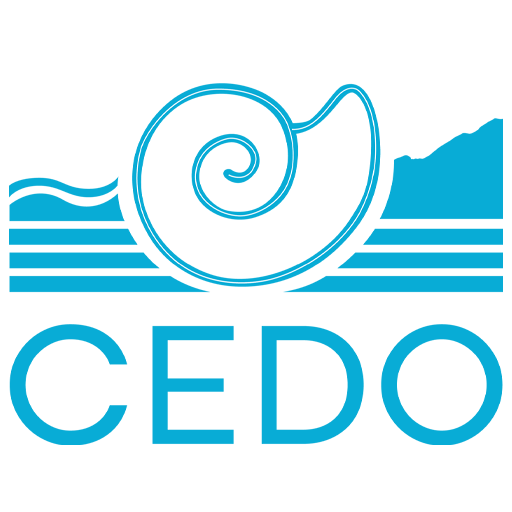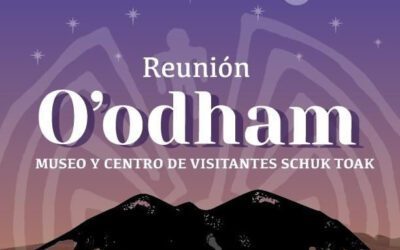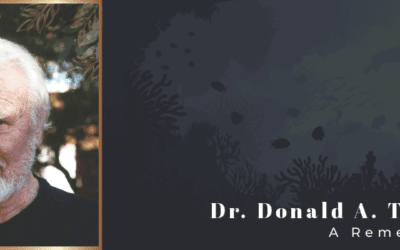[vc_row][vc_column][vc_separator][vc_column_text]By: Mark Kaib. Retired USFWS Wildfire Ecologist[/vc_column_text][/vc_column][/vc_row][vc_row][vc_column][vc_column_text]Dear Friends,
I had a special experience at CEDO in Puerto Peñasco recently. Having traveled since childhood to these wonderful tide pools and beaches, I was always a supporter of CEDO since its beginning. My interest was to go back and rekindle some old memories and to volunteer for CEDO. Dr. Nélida Barajas Acosta, CEDO’s relatively new Executive Director, and the awesome staff at CEDO are very impressive. They welcomed me like familia. Right away we went out camping and conducting bird surveys at the under-appreciated Pinacate National Park and Biosphere Reserve. Then we did ecotours at the Morua Estuary on kayaks with a visit to the Women’s Oyster Farm and Cooperative. What’s next ? Hasta manaña would tell….. An educational interchange to develop trust and more sustainable fishing technologies and practices with the Peñasco white-clam diver’s cooperative… or a community meeting in Santa Clara to discuss endangered Vaquita porpoise protection, or a workshop in Bahia San Jorge with the blue swimming crab cooperative. Truly amazing… It was also very nice on some days to stay and relax at CEDO’s Casa Blanca, and help Zaida and Paloma with organizing the gift shop, with museum tours, or science collections.[/vc_column_text][/vc_column][/vc_row][vc_row][vc_column][vc_single_image image=”1227″ img_size=”large” alignment=”center” style=”vc_box_border” border_color=”vista_blue” onclick=”link_image”][vc_column_text]Camping in 1970 on Sandy Beach with the Kaib family (Photo: John R. Kaib)[/vc_column_text][/vc_column][/vc_row][vc_row][vc_column][vc_column_text]Every day was an amazing! new experience. I am a world traveler, and have been going to Central America lately as an alternative to Mexico. This trip brought me back to the Mexico that I knew. The generous hospitality of the CEDO staff and Mexicans in general, their strong sense of family and place, incredible food, and enormous landscapes with abundant and diverse wildlife…. I have a new rekindled compassion and hope for the future of Mexico and her conservation. Much of this comes from seeing what novel projects CEDO continues to accomplish and building on their 40+ years of community empowerment for conservation. Remarkably this is all done on a shoestring only because of their strong devotion to the work.[/vc_column_text][/vc_column][/vc_row][vc_row][vc_column width=”1/2″][vc_column_text]Nélida and her staff (BTW! mostly women), are leading the way for conservation on several very impressive fronts. She and her family and everyone at CEDO were generous and humble, and enlightened me during my 3 week internship.
They are very professional, driven by conservation ethics, and ambitious. I am still in awe at the breadth and diversity of the very important conservation portfolio they have developed. I want to thank them for sharing a small part of their world it was truly inspiring.
None of these efforts could be fulfilled without our support. This is a very crucial time for CEDO and Puerto Penasco. They are just beginning to crawl back from the virus pandemic. Sprawling resort developments do not sleep however, endangered fisheries are being further depleted, and there are emerging threats to important wildlife habitats.
CEDO has always understood, the foundational conservation work is at the community scale, fortifying their traditional lifeways and resilience. CEDO works on all these dimensions of conservation through education, training, science applications and community action! The result is a long history of success stories.[/vc_column_text][/vc_column][vc_column width=”1/2″][vc_single_image image=”1232″ img_size=”large” style=”vc_box_border” border_color=”vista_blue” onclick=”link_image”][vc_single_image image=”1233″ img_size=”large” style=”vc_box_border” border_color=”vista_blue” onclick=”link_image”][/vc_column][/vc_row][vc_row][vc_column width=”1/2″][vc_single_image image=”1236″ img_size=”large” style=”vc_box_border” border_color=”vista_blue” onclick=”link_image”][vc_single_image image=”1239″ img_size=”large” style=”vc_box_border” border_color=”vista_blue” onclick=”link_image”][vc_single_image image=”1237″ img_size=”large” style=”vc_box_border” border_color=”vista_blue” onclick=”link_image”][vc_single_image image=”1241″ img_size=”large” style=”vc_box_border” border_color=”vista_blue” onclick=”link_image”][/vc_column][vc_column width=”1/2″][vc_column_text]A recent trip to Pinacate to establish bird diversity monitoring transects was educational for me. Under the leadership of Miguel Angel Grageda, U of A graduate student, Dr. Aaron Flesch, and Angeles Sánchez Cruz at CEDO, a binational meeting was convened to begin this important international conservation collaboration at the new Pinacate Visitor Center. After introductions, protocols and getting connected we proceeded out to the sand-dune landscape towards the Sea of Cortez to fill our eyes and noses and minds with sand. Fortunately the winds on our first night were mild and the camp fire, modello negra and new friends made for nice company.
We were up before dawn, some dark strong coffee, burritos, and the team launched to establish the first transect across the vast dune fields also known as the Gran Desierto. The end of the transect was so close…. but we could not yet see the blue ocean. So of course we had to climb the highest nearby dune and be rewarded by a similar view that Padre Kino had some 400 years ago, of the Sea of Cortez in all its majesty.
The next morning I found myself out with Aaron and Abelardo. Aaron is an accomplished ornithologist, who risks his like documenting bird migrations across the southwest borderlands. Abelardo is CEDO’s professional photographer and interdisciplinary planner. We found ourselves at Campo Cono Rojo, an ancient volcanic cinder cone. We had camped the night before on the lava. We awoke to a dense ocotillo forest with stands of giant Bursua microphyla, also known as elephant trees, and fields of medusa-head barrel cacti. This pecular and enticing volcanic-scrub forest, you won’t find anywhere else in the world but at Pinacate.
The paleo-volcanic desert landscape was very awesome, I expected dinosaurs but was however delighted by zebra-tailed sand lizards, tiny unseen Anna’s humming birds, with their high-pitched sirens whizzing by, and the ghost black phainopepla grazing on paloverde mistle toe berries. I was again delightfully reconnected to mother earth.[/vc_column_text][/vc_column][/vc_row][vc_row][vc_column][vc_column_text]This was and is a great time to get inspired by CEDO for our Planet. Donations always help. Volunteering for a few weeks or months can be extremely rewarding, and a nice chance to brush up on your Spanish. I have to encourage anyone that cares… Please continue to generously support CEDO and conservation any way you can. Keep an eye out for the CEDO’s ever-changing wish list, there may be an item that is collecting dust in your garage that would be a great benefit to their operations. Having gringo volunteers, provides a different dimension of support to CEDO that is invaluable to everyone. You can even possibly work from the USA remotely. There are an endless number of projects, chores, maintenance, education, citizen science, training, and ways to personalize your experience based on your knowledge, skills, and interest. The intercultural synergy created during these volunteer exchanges is invaluable.[/vc_column_text][/vc_column][/vc_row][vc_row][vc_column][vc_column_text]
I was living my dream the past 3 weeks, and personally benefited way more than CEDO did from my visit. Please consider more deliberate donations to CEDO and wildlife conservation, or through a volunteer intercultural experience with CEDO… you won’t regret it.
Another Day – More Adventure
Mark Kaib | Retired USFWS Wildfire Ecologist
[/vc_column_text][/vc_column][/vc_row][vc_row][vc_column][vc_cta h2=”Support CEDO” style=”flat” color=”vista-blue” add_button=”bottom” btn_title=”Donate Now!” btn_color=”mulled-wine” btn_size=”lg” btn_i_icon_fontawesome=”fas fa-hand-holding-heart” btn_add_icon=”true” btn_link=”url:http%3A%2F%2Fazgives.cedo.org%2F||target:%20_blank|”]Our equipment, our field station, and our facilities are fundamental for our research, conservation, and community well-being work.
Support CEDO’s efforts to continue our field work to protect and promote the responsible use of this wonderful ecoregion where the Sonoran Desert meets the Sea of Cortez.[/vc_cta][/vc_column][/vc_row][vc_row][vc_column][vcj_team_member image=”1255″ name=”About the Author:” layout=”style3″ image_ratio=”portrait” color_name=”#ca972e”]John Mark Kaib
Retired USFWS Wildfire Ecologist.[/vcj_team_member][/vc_column][/vc_row][vc_row][vc_column][vc_column_text][ctct form=”1153″ show_title=”false”][/vc_column_text][/vc_column][/vc_row]









0 Comments